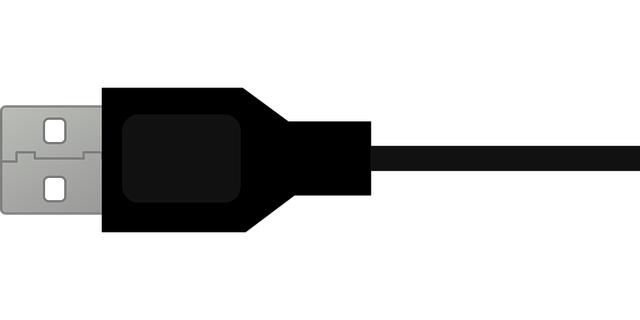In the ever-evolving realm of virtual reality, achieving an immersive experience frequently enough hinges on the quality of the connection that brings you closer to alternate realities. Enter the Oculus Link Cable, a lifeline that promises to bridge the gap between the standalone freedom of the Oculus Quest and the expansive worlds offered by PC gaming. With its sleek design and high-performance capabilities, this cable claims to elevate the VR experience by delivering seamless access to a rich library of content. But does it truly live up to the hype? In this comprehensive review, we’ll explore the nuances of the Oculus Link Cable, examining its performance, ease of use, and value, providing you with all the insights needed to determine if this wired connection is the best fit for your virtual adventures.
Enhancing Your VR Experience with Oculus Link Cable
When it comes to elevating your virtual reality experience, the Oculus Link Cable stands out as a game-changer. This high-speed connection allows Quest users to tether their headset to a gaming PC, unlocking access to a library of PC VR content previously unreachable. The cable supports seamless gameplay with minimal latency,ensuring that your movements translate smoothly within the virtual environment. With the right specifications, it can handle high-resolution graphics, providing an immersive experience that rivals the most advanced VR setups.
To make the most of your Oculus Link Cable, consider the following tips:
- Use a USB 3.0 Port: Ensures maximum data transfer speeds.
- Choose the Right Length: Depending on your space, a longer cable might offer better movement.
- Keep Your Setup Organized: Avoid tripping hazards by securing loose cables.
The compatibility with various gaming setups further enhances its appeal. Below is a rapid comparison of different cable options:
| Type | Length | Speed | Price |
|---|---|---|---|
| Oculus link Cable | 5m | Up to 5 Gbps | $79 |
| Third-Party USB-C Cable | 3m | Up to 10 Gbps | $25 |
| Custom PC Cable | Variable | Up to 20 Gbps | $50+ |
investing time in optimizing your VR setup with the Oculus Link Cable can significantly expand your gaming horizons, making every session more enjoyable and engaging.

Unveiling Performance: Speed and Latency Analysis
When it comes to virtual reality, where every millisecond counts, the performance of your connection can significantly impact your experience. The Oculus Link cable excels in delivering a reliable and robust connection that minimizes latency, allowing for a seamless transition between the digital realms of gaming and exploration. Users have reported an impressive ability to maintain high frame rates while virtually traversing expansive environments, which is integral for minimizing motion sickness and enhancing immersion. With an optimal setup,you may experience:
- Stable Connectivity: Unlike wireless options that may falter under interference,the Link Cable provides a direct path to your VR headset.
- Consistent Refresh Rates: Expect near-native performance that keeps your visuals sharp and responsive.
- Low Input Lag: The cable, designed for high-speed data transfer, significantly reduces the delay between your actions and their portrayal in the virtual space.
To illustrate its capabilities, consider the following performance metrics when using the Oculus Link Cable:
| Feature | Performance Metrics |
|---|---|
| maximum Bandwidth | 5 Gbps |
| Latency | Under 20 ms |
| Compatible devices | Oculus Quest and Quest 2 |
By maintaining impressive speed and low latency, the oculus Link Cable not only elevates your VR gameplay but also ensures that you can truly lose yourself in immersive environments without distractions from technical issues. This performance is particularly noteworthy for developers and content creators who depend on precise graphics rendering, making the Link Cable an essential tool for creating high-quality VR experiences.

Comparative insights: Oculus Link Cable vs. Alternative Options
When it comes to connecting the Oculus Quest VR headset to a PC for an enhanced gaming experience, users face a critical choice between the official Oculus Link Cable and various alternative options. The Oculus Link Cable prides itself on being purpose-built for optimal performance, boasting characteristics like a high-speed USB 3.0 connectivity and a robust construction designed to endure frequent use.This cable supports both power and data transfer effectively, ensuring minimal latency and a stable connection, which is essential for high-quality VR sessions. Moreover, its generous 16-foot length provides freedom of movement, allowing users to immerse themselves fully in their virtual environments without the risk of getting tangled or constrained.
On the flip side, there are indeed several alternative options available in the market that claim to offer similar performance, albeit at a typically lower price point. Consider the following alternatives, each offering distinctive features for users to weigh against the official cable:
- High-Speed USB C cables: Frequently enough available at a fraction of the cost, these cables can deliver comparable speeds but may not possess the same durability.
- Third-Party extensions: These often include longer lengths or versatility options but come with uncertainty regarding compatibility and data integrity.
- Wireless Solutions: Using Air Link provides a cable-free experience, yet may introduce higher latency and performance inconsistency.
Ultimately, the decision is complex, hinging on individual usage patterns, budget constraints, and performance expectations. Below is a quick comparison of the options:
| Feature | Oculus Link Cable | Alternative Options |
|---|---|---|
| Performance | Optimized for VR | Varies; may lack consistency |
| Length | 16 feet | Varied (up to customer choice) |
| Price | Premium | Generally lower |
| Durability | High | Variable |

Practical Tips for optimal Setup and Usage
Achieving the best performance with your Oculus Link setup involves paying attention to multiple factors that can enhance your overall VR experience. First and foremost, ensure that your USB ports are optimized. Use USB 3.0 ports to facilitate faster data transfer and reduce latency. Consider using a dedicated USB card if your system lacks available ports.Additionally, keep your software up-to-date for both your Quest headset and PC, as updates often include performance enhancements and better compatibility with the Link cable.
Next, focus on managing your cable environment to minimize interference. keeping your link cable untangled and free from physical obstructions will not only prolong its lifespan but also provide a steady connection during use. Aim to maintain a comfortable play space,which includes arranging your setup to reduce the chances of tripping over the cable. Here are a few tips for optimal cable management:
- Use cable sleeves to organize and protect the link cable
- Secure the cable along walls or furniture to avoid tangling
- Consider using a cable tether system to keep the cable off-tripping zones
In Retrospect
As we draw the curtain on our exploration of the Oculus Link Cable, it’s clear that this accessory stands out as a vital companion for any Quest VR owner seeking to enhance their virtual reality experience.With its robust design, impressive performance, and seamless connectivity, the Link Cable not only bridges the gap between standalone gaming and the expansive world of PC VR but also opens up endless possibilities for immersive adventures. Whether you’re delving into resource-heavy titles or simply enjoying the rich visuals of your favorite games, investing in this cable can significantly elevate your VR journey. As technology continues to evolve, so too will the ways we connect—making the Oculus Link cable a worthwhile consideration for those keen on maximizing their escapades in immersive worlds. So, plug in, power up, and let your virtual adventures begin!





